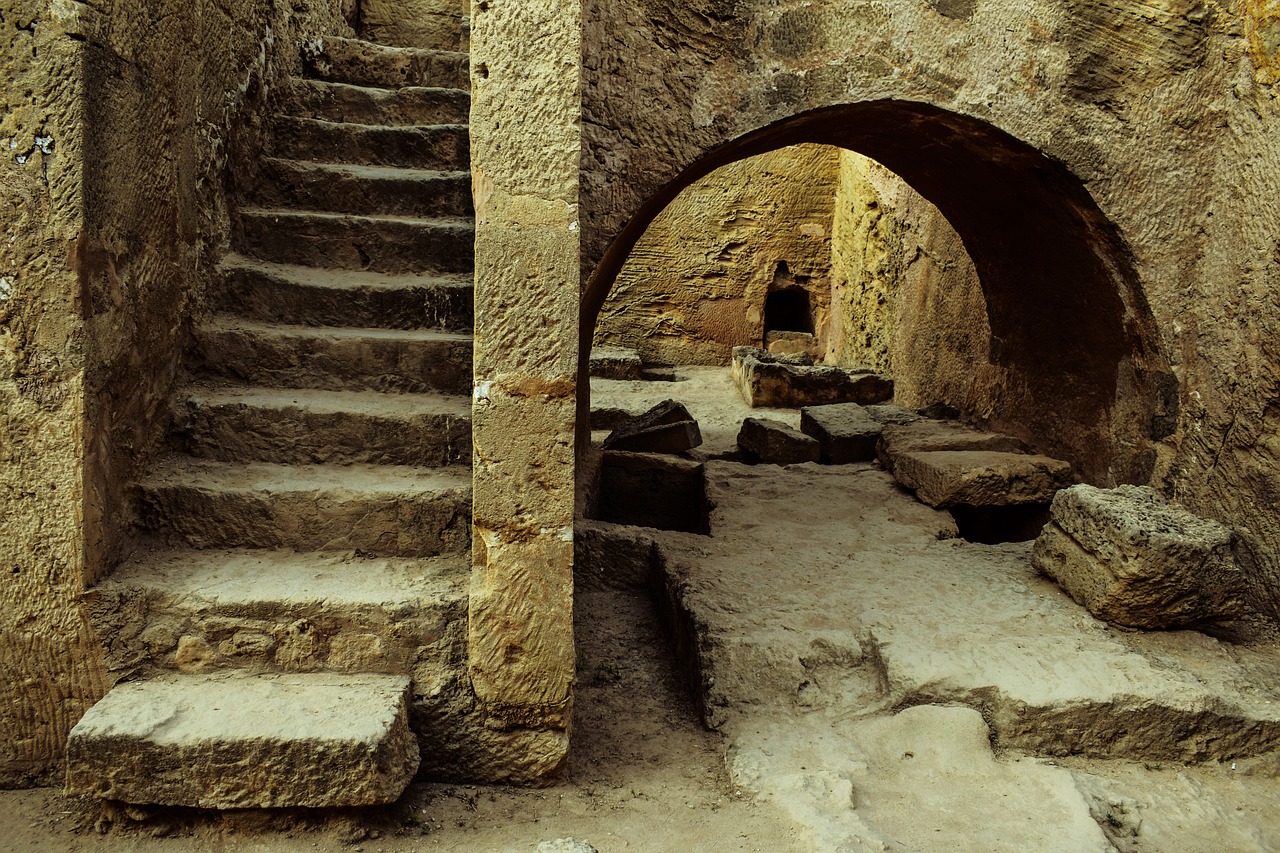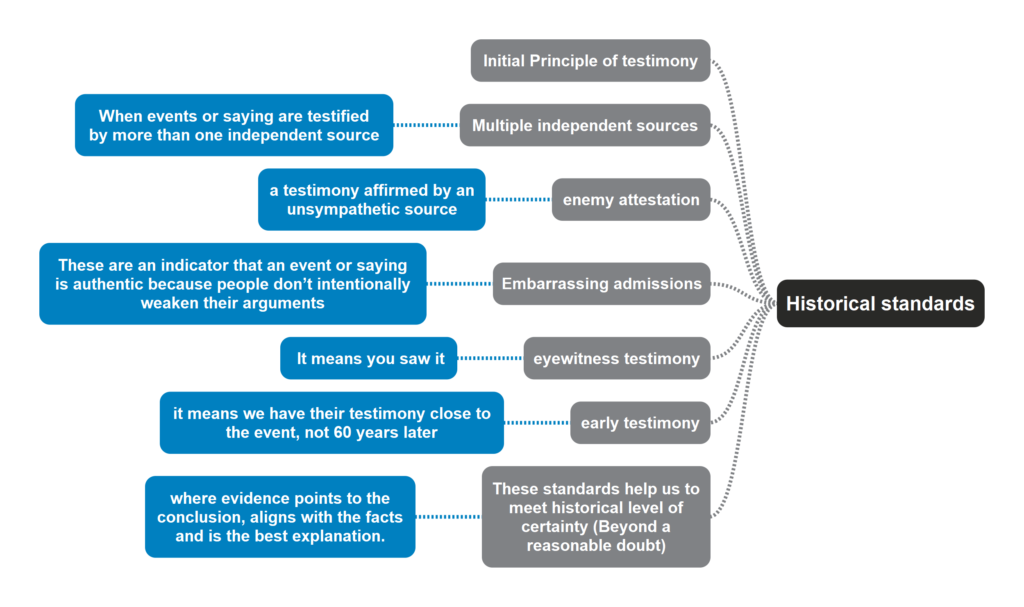2.2 The Historical Method: Historical standards

History: Multiple independent sources support historical claims
This is when an event or saying is testified by more than one independent source, there is strong indication of historicity. You need to determine the genuineness of an independent source (If you heard the story from another then you are not an independent source). If you have more than one independent source you have a strong case.
Imagine a case involving a blue car crashing into a red car, it had a group of five people witnessing the incident. Three of the witnesses left when their bus arrived. One of the three told the two others who remained that the red car ran through a red light. The drivers and the bus stop witnesses available were interviewed.
Scenario 1
If just the red car accuses the blue of running the red light the case isn’t strong, you’re just trying to blame the other guy. The independent sources make his claim more powerful.
But what if the bus stop witnesses give conflicting accounts? The detective still observes the crash happened, there are two damaged cars. The fact that the witnesses do not agree shows they did not consult each other first to all give the same story producing greater honesty. This way you can get different details to build a picture potentially. If their stories were identical, this maybe super suspicious. Think of it like this, when an examiner discovers two people have the same wording and same mistakes in their exam papers, you trust them less, not more.
Additional criteria & sources for ‘Multiple Independent sources’:
- Graham H. Twelftree, Jesus: The Miracle Worker, p247-253 (Twelftree credits Robert J. Miller’s “Historical Method and the deeds of Jesus: The Test Case of the Temple Demonstration,” Forum 8, p5-30 for 18 thesis of historicity)
- John P. Meier, A Marginal Jew: Rethinking Historical Jesus, 3 vols. p1:167-95
- Behan McCullagh, Justifying Historical Descriptions, p19
- For a demonstration for how historical criteria of authenticity are sometimes abused, see Ben Witherington III, The Jesus Quest: The Third Search for the Jew of Nazareth p46-48
Sources for ‘Multiple Independent sources’
- Gary Habermas & Mike Licona: The Case for the Resurrection of Jesus
History: Attestation by an enemy supports historical claims
If testimony affirming an event or saying is given by a source who does not sympathise with the person, message, or cause that profits from the account, we have an indication of authenticity. Enemies are generally not seen to be bias in favour of the individual they oppose.
One of the witnesses at the bus stop was a friend of the red car driver and admits his friend ran the red light.
Scenario 2
This testimony is somewhat stronger than the other testimonies because as a friend he hasn’t taken his friends side, he’s being honest. He’s defending the blue car with no motive but honesty alone. When even enemies acknowledge integrity, the matter is pretty well established.
History: Embarrassing admissions support historical claims
Embarrassing admissions are an indicator that an event or saying is authentic because the source would not be expected to create the story, because it embarrasses his cause and “weakens their position in arguments with opponents.”
The driver of the blue car admits he caused an accident 10 years ago because he ran a red light. The detective may tend to believe the entire testimony of the driver of the blue car over the red because he willingly shared information despite it would tend to embarrass or hurt him. He appears to be attempting to tell the truth.
Scenario 3
Declarations against interest are regarded as having a high degree of credibility because of the general presumption that people do not make up lies in order to hurt themselves, especially in crucial situations; they lie to help themselves.
Sources for ‘Embarrassing admissions’
- John P. Meier, A Marginal Jew: Rethinking Historical Jesus, 3 vols. p1:168
History: Eyewitness testimony supports historical claims
Eyewitness testimony is usually stronger than a secondhand account.
Two witnesses who saw the crash remained at the bus stop, their testimony was seen stronger than the ones who heard about the crash. If all primary witnesses left, the secondary sources would provide support for the stories. In a court of law it would not hold up, but the investigator can certainly use the resource to determine a situation or collect a testimony
Scenario 4
Historians must also consider testimony of secondhand witnesses as they attempt to arrive at a conclusion regarding what happened. There are times of bad eyewitness testimony, these involve incidents with knife, gun incident, their focus is unnaturally on the weapon, not the scene. The testimony we deal with here is not of this kind in this case and so we will not develop this branch of eyewitness testimony.
History: Early eyewitness testimony supports historical claims
The closer the time between the event and the testimony about it, the more reliable the witness, since there is less time for exaggeration, and even legend, to creep into the account.
S
2 years after the accident, Insurance companies push the car crash case to trial, several eyewitness testify to what they saw. This is eyewitness testimony, and it’s early.
Scenario 5.1
30 years after the accident, new facts come to surface to suggest the red car deliberately planned the crash to kill the driver of the blue car. The detective collects eyewitness testimony, but it’s not early.
Scenario 5.2
Ideally in this scenario, you want firsthand accounts recorded shortly after the incident.




0 Comments